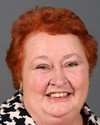One of the things I told another colleague is that we need to start to look into our communities. The Sharon McIvor case really looks at ending gender discrimination within the Indian Act. In terms of how to move forward from that, even our national aboriginal organizations have stepped back from taking a stance, because there is division even amongst our people as to which way we now need to go.
I think what we need to do and what I've asked my people to do is go back to the communities, look at our children, look at our people both on and off reserve, and think about the next seven generations. We have to think about the next 70 years ahead of us, because the last 70 years didn't think about us.
Honestly, I will not answer what direction we should go in. It's a neutral position that I personally have, because on one end I'm grateful for what the bill will do; however, it's not exactly what Mrs. McIvor wanted. I'm sure you have read your white-binder briefing notes on that. She actually did send out a letter recently to MPs declaring her stance. So I won't speak to Sharon McIvor's case, but personally I am neutral in terms of a position on that. I do ask that our communities look towards our future generations, the next 70 years ahead.



